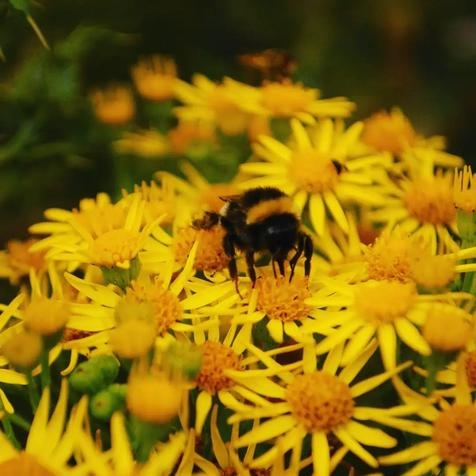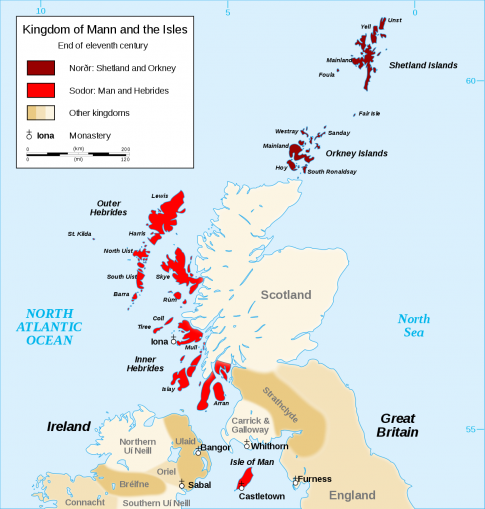Ragwort - Cushag Friend or Foe

There was a recent item on the Irish Wildlife Trust Facebook page where they mentioned the benefits of the plant Ragwort or as it is known in the Manx Gaelic language "Cushag". The Ragwort (Jacobaea vulgaris) is a wild flower in the family Asteraceae that is native to northern Eurasia. It is an importnat food source for a wide range of insects. However, it is not always welcome by some because of its toxic effect for cattle and horses.
There is no doubt, as a number of studies have shown, that it provides a great deal of nectar for pollinators. Its benefits to insects recently made clear by the Irish Wildlife Trust, when encouraging people to send them photographs they wrote:
"Although it is much maligned, ragwort is among our most important plants for insects... including pollinators. Why not ad your ragwort insect photos to the comments section. Keep an eye out for the yellow and black cinnabar moth caterpillars. They love this plant!"
So there we have the dilemma about the Ragwort (Manx: Cushag). Manx poet and playwright Josephine Kermode (1852–1937) took the pen name "Cushag" and in her poem of the same name tries to give a practical solution of preventing the spread of ragwort growing in farmland with animals, but to allow it to retain a place in the wild green spaces:
"The Cushag" by Josephine "Cushag‟ Kermode (1852–1937)
"Now, the Cushag, we know,
Must never grow,
Where the farmer's work is done.
But along the rills,
In the heart of the hills,
The Cushag may shine like the sun.
Where the golden flowers,
Have fairy powers,
To gladden our hearts with their grace.
And in Vannin Veg Veen,
In the valleys green,
The Cushags have still a place."
The Cushag is likely to continue to divide opinion, not least in the Isle of Man (Manx: Mannin) where many consider it as the National flower. According to one story King Orry chose as his emblem the cushag flower. King Orry is a name given in the Isle of Man to the Norse - Gael ruler Godred Crovan (died 1095). He is said to have chosen the flower as its twelve petals (although it really has thirteen) represent one of the isles of the Kingdom of Mann and the Isles: the Isle of Man, Arran, Bute, Islay, Jura, Mull, Iona, Eigg, Rum, Skye, Raasay, and the Outer Hebrides.
Image above: Cushag - Ragwort courtesy of the Irish Wildlife Trust.
Image below: Kingdom of Mann and the Isles at the end of the 11th century. Image courtesy of Wikipedia.







